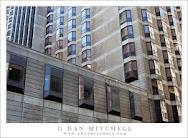The need to decrease energy usage and subsequent emissions from the building sector has been at the forefront of U.S. green movement. Not only has energy reduction been viewed as a step for improving the environment, it has financial benefits for companies and homeowners.
To address this, researchers at the Massachusetts Institute of Technology’s (MIT) Concrete Sustainability Hub conducted a life-cycle assessment (LCA) study to evaluate and improve the environmental impact and study how the “dual use” aspect of concrete – its ability to offer a durable structure while providing thermal mass benefits for energy loads – affects the environmental footprint of the structure.
"Methods, Impacts, and Opportunities in the Concrete Building Life Cycle" provides a comprehensive analysis that advances three key areas relevant to the buildings LCA field: methodology, benchmarking, and impact-reduction opportunities. The study is a major development for construction-related life-cycle assessment because it thoroughly examines all phases of the complete life cycle of a building – from acquisition of materials to construction, the use of the building, and finally demolition and end of life.
“Most environmental assessments do not move beyond the construction phase and only provide a partial picture of the full impact a particular material can have on a building. This is short-sighted,” David Shepherd, director of sustainable development for the Portland Cement Association (PCA) said. “The heating, cooling, and general operations of buildings and homes in the United States accounts for approximately 70 percent of national energy consumption each year and an accurate LCA needs to include the operational phase.”
Concrete, essential for the construction of buildings and homes, has largely been chosen as a building material for its structural properties rather than its energy-saving properties. Although sustainable builders have known the thermal mass attributes of concrete significantly reduce heating and cooling needs, the energy consumption required to produce its key ingredient, cement, has raised questions about its environmental viability.
In its environmental assessment, MIT researchers found concrete homes produce lower greenhouse gas emissions than current best practice code – compliant wood-frame residences throughout a 60-year service life.
Concrete homes did have a higher embodied global warming potential (GWP) associated with the pre-use phase of LCA when raw materials are harvested and turned into construction materials, transported to the site, and assembled into the finished home. However, this phase accounts for only about 2 to 12%of the overall global warming potential for the life of the home. For the 60-year period of the study, houses constructed with insulated concrete forms have 5 to 8 percent lower GWP than current code compliant light frame wood houses, based on greater thermal mass and higher R-values. Researchers found similar results when evaluating multifamily residences.
Commercial office buildings built with a concrete structural frame produce slightly less greenhouse gas emissions over a 60-year service life than commercial structures built with steel frames, based on the results of the comprehensive MIT assessment.
MIT researchers then evaluated strategies to lower a concrete building’s carbon footprint and overall environmental impact. A major advancement was the incorporation of a cost-impact analysis to determine whether or not a given environmental reduction strategy made economic sense. Among the strategies evaluated, the two that reduced embodied emissions – increased fly ash and reducing the thickness of concrete walls from a 6-inch to a 4-inch concrete core – were found to be both economical and effective ways to reduce emissions. BD+C
Related Stories
| Aug 11, 2010
Populous selected to design 'crystalline skin' stadium for 2014 Winter Olympics
Russian officials have selected global architect Populous to design the main stadium for the 2014 Winter Olympic and Paralympic Games in Sochi, Russia. The 40,000-seat stadium will feature a crystalline skin that "engages with its surroundings by day and provides an iconic representation of the color and spectacle of the games when illuminated at night," said Populous senior principal John Barrow.
| Aug 11, 2010
M&A deal volume down 67% in engineering/construction sector: PricewaterhouseCoopers
Global Economic Uncertainty Results in Sluggish Deal Activity in U.S.; China Shows Significant Opportunity for Growth
| Aug 11, 2010
Three Opus Corporation companies file for bankruptcy
Opus Corporation, a developer headquartered in Minnetonka, Minn., filed for bankruptcy in three of its five regional operating companies: Opus East, Opus South, and Opus West. CEO Mark Rauenhorst said sharp declines in commercial real estate values and tight credit markets caused difficulties in refinancing assets and restructuring lending agreements.
| Aug 11, 2010
ZweigWhite names its fastest-growing architecture, engineering, and environmental firms
Management consulting and research firm ZweigWhite has identified the 200 fastest-growing architecture, engineering, and environmental consulting firms in the U.S. and Canada for its annual ranking, The Zweig Letter Hot Firm List. This annual list features the design and environmental firms that have outperformed the economy and competitors to become industry leaders.
| Aug 11, 2010
SSOE, Fluor among nation's largest industrial building design firms
A ranking of the Top 75 Industrial Design Firms based on Building Design+Construction's 2009 Giants 300 survey. For more Giants 300 rankings, visit http://www.BDCnetwork.com/Giants
| Aug 11, 2010
Guggenheim to host live online discussion of Frank Lloyd Wright exhibition
The Solomon R. Guggenheim Museum launches the Guggenheim Forum, a new series of moderated online discussions among experts from a variety of fields that will occur in conjunction with major museum exhibitions.
| Aug 11, 2010
Best AEC Firms of 2011/12
Later this year, we will launch Best AEC Firms 2012. We’re looking for firms that create truly positive workplaces for their AEC professionals and support staff. Keep an eye on this page for entry information. +







